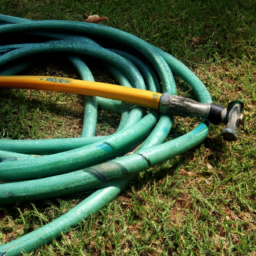Garden Hose Flow Rate How Many Gallons Per Minute
How Many Gallons Per Minute Is A Garden Hose
Gardening with GPM: How Many Gallons Per Minute Does a Garden Hose Provide?
Buying a garden hose is an important purchase; after all, these essential items provide the water your outdoor plants need to survive. Beyond being able to reach certain points in your garden, you should also understand how many gallons per minute (GPM) each garden hose produces. This article explores 8-12 of the most essential GPM topics, including history, milestones, trends, and pitfalls.
From Garden to Garden Hose
Gardening, a practice that's been around for centuries, used sprouts and other plants to furnish a diet for ancient civilizations. Today, gardeners focus on aestheticism and spending time outside, while the garden hose has become an essential tool for most water-dependent outdoor plants. Before giving an answer to the question of how many GPM a garden hose provides, it's important to understand how this tool has evolved over time.
Historical Context
Before hoses, there were buckets and cans for transferring small amounts of water. Row gardeners would tote containers from one plant to the other, hoping it would be enough to keep their floral friends alive. Later, the ancient Chinese dynasty invented gutta-percha, a type of latex that became the crucial component of the first fire hose.By 1700, variations of the rubberized fabric had been used to create the first rudimentary garden hose. It's clear that gardeners and garden hoses have stood the test of time, and we have been relying on these tools for centuries.
Key Milestones
In 1899, a New Jersey entrepreneur designedthe first hose nozzle and marketed it to boom the practice of gardening as we know it. Later, in 1950, Earl Kummer patented first-ever self-coiling garden hose, elevating gardens into the modern era. From that point on, the garden hose has changed drastically. Now, garden hoses are made of a variety of fabrics and components, covering a delegation of uses, such as the 66710402 by Apache Hose and Belting.The development of modern hoses certainly deserves appreciation.
Popular Trends
Some of the latest garden hose trends tend to pay more attention to sustainability and eco-friendliness. Many brands now create hoses made of recycled rubber materials, which can decompose with time. On the fashion front, there has been an uptick in neon colors and patterns designed to stand out. Additionally, more than ten nations have introduced water specific limits meaning households have to save water.
Potential Pitfalls
Although garden hoses are great tools, there are drawbacks. Hoses made of material that easily breaks due to extreme temperature changes are a definite no-no. Hose tap joints are also problematic a broken hose joint can cause water leakage and mass flooding problems around the garden. What's more, hose clamps were once used to join the parts of the hose. Unfortunately, they are no longer reliable due to corrosion.
The Flow of GPM
Now that you've taken a look at garden hoses' history and the potential issues related to them, it's time to tackle the primary topic: GPM. GPM is a measure of how much water a hose can produce, and it is usually measured in the USA in gallons/minute.
Understanding GPM
GPM can be calculated by multiplying the hose diameter with pressure. It's important to identify the right type of gpm for your garden hose. If your hose is too powerful, it might over-saturate some of your plants, while too weak a hose could deprive your greenery from the water it craves. A 3/4 inch hose with a 1.5 GPM flow rate might provide the correct amount of water for most households.
Finding the Perfect Fit
To find the ideal GPM for your garden hose, it's important to evaluate the size of your garden and the type of plants you tend to. For avid gardeners, a convex shaped garden hose that helps to store and conserve water is a great addition. The best part is, they are available in a wide array of sizes and materials, so you don't have to worry about finding the right fit.
Investing in High Quality
Getting the wrong type of garden hose can negatively affect your plants' well-being. To ensure that your plants are provided with sufficient water, it's important to invest in a high-quality garden hose, one that has a smooth inner surface to reduce water blockages. Brands such as Flexzilla resist kinks and provide a constant flow that's suitable for both short and long-term gardening marathons.
Water Themed Finale Closing Remarks
Garden hoses are an essential part of tending to plants. When investing in a garden hose, it's important to learn about the specifics of GPM, size, and quality. Depending on the size of your garden and the types of plants you have, you might need a full-length hose or a smaller version. The important thing is to find the one that suits your needs the best. Understanding and investing in the right hose could be the difference between a vibrant garden and a water-starved wasteland.
Insights from the Garden GPM Exploration
As this exploration of garden hose GPM explains, there are many factors to consider when selecting a garden hose. Although GPM's answer is relatively simple a typical garden hose produces about 1.5 gallons per minute its implications are far-reaching. Investing in the right garden hose will provide your garden with the optimal amount of water, keeping it healthy for years to come. By understanding the historical context, milestones, trends, and pitfalls of garden hoses, you'll be able to make an informed purchasing decision.

Previous Page
Next Page
